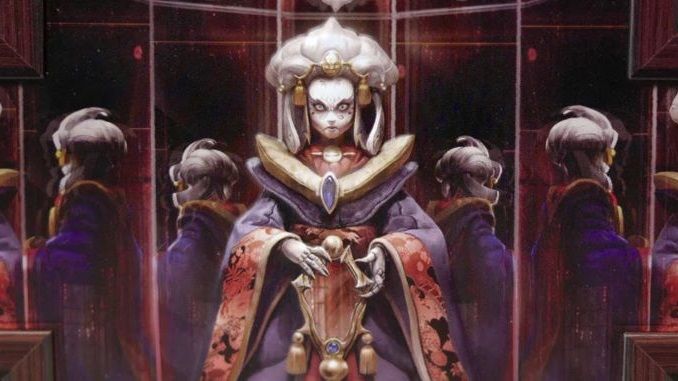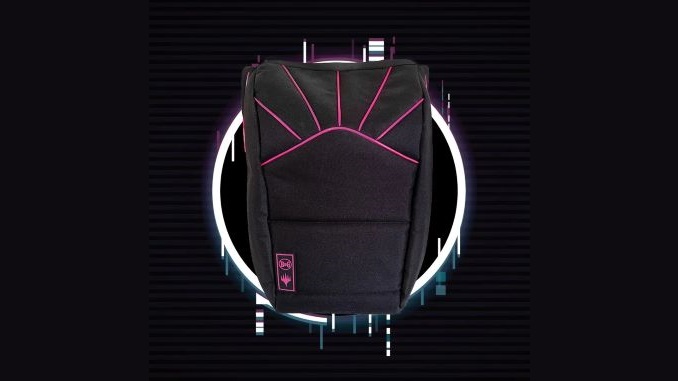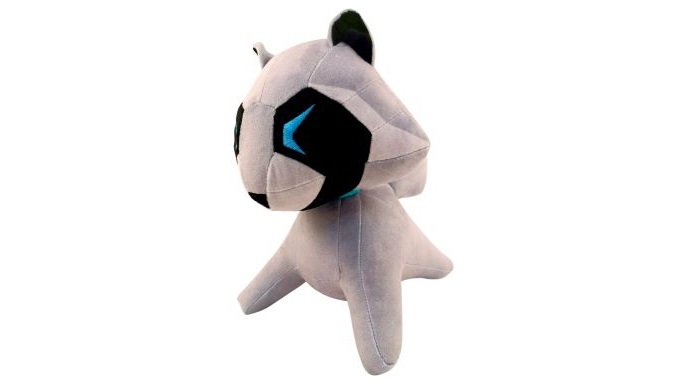Beadle & Grimms’ New Magic Platinum Edition Is Games Culture In A Cyberpunk Backpack
Games Features magic
I have an acute fascination with collectable cultures. There is something truly interesting about the drive that some people have to cover their walls in Funko Pops, to accrue a huge number of Lego sculptures, or to own every PlayStation videogame release. The level beyond this consumer good collection world is one that I am even more intrigued by: the high-end collectible. When tabletop deluxe product makers Beadle & Grimms reached out to ask if I was interested in reviewing their $500 backpack full of Magic: The Gathering collectible objects, I immediately said yes. Could anything be truly worth that kind of money? What could this thing even be?
What arrived was the Magic: The Gathering Platinum Edition for the Magic set Kamigawa: Neon Dynasty, a series of cards set in a cyberpunk pseudo-Japan that released earlier this year. It positions itself as somewhere between a collectible art object and a genuinely useful set of tools for playing Magic. There is a stylish backpack designed explicitly for carrying M:TG materials. There’s a little sculpture that allows you to track your life. There’s some bespoke counters to help you augment your creature cards. There’s a truly beautiful playmat, and there are some deck boxes and card sleeves. These are all things you use to play the game.
There are also some things that are just there to help you style your life around your fandom for Magic. There are exclusive art prints and a large cybernetic fox plush that, I imagine, is pretty hard to get ahold of outside of this very specific product. These non-gameplay objects are about signaling what kind of gamer you are, or what kind of player, so that you can display your desires and loves for all the world to see.

The Platinum Edition of Neon Dynasty feels quite a bit different to me than the last Beadle & Grimm’s product that I reviewed, 2018’s Dragon Heist Platinum Edition, which was styled around the D&D adventure of the same name. That product was similarly priced, but that money largely went toward preparatory labor—at every turn, that box worked to save time and help a Dungeon Master have a smooth and complete session of D&D. I could see a world in which a player, or a play group, made an investment into that product as a way of owning a cool object and getting some great time-saving methods.
By contrast, this Neon Dynasty backpack is geared toward players rather than play groups. In this way, it feels so much closer to the Funko universe in that purchasing it constitutes a statement about you and how you want to depict your life. Seeing someone with the (awesome) pink, angular backpack says something about their fandom for Magic and their particular attachment to Kamigawa, the light science fiction world that these arts and cards take place within. We live in a world of constant allegiance maintenance, in which fandoms dominate expression within games spaces. When you write about a series, you’re expected to confess your love of it. The most popular streamers or video makers are expected to demonstrate their love for their games with emblazoned shirts, logo’d gamer chairs, and shelf tchotchkes floating behind them in talking head footage. This is our culture.

This product ultimately exists to support that, and exists at a high price point to signal exactly what kind of object it is. The expenditure signals something, and in that way it is not that far away from a $400 action figure or a $450 replica of Sauron’s gauntlet. The solidification of nerd culture is the continued blooming economy of ways to signal that one belongs in that community, and being able to sit down to a Magic game with a deckbox that only a few hundred people on the planet own, secured by some framed art back at home, is an alluring proposition in a world where those allegiances and fandoms are a kind of gateway to seriousness.
This is all to say that opening the box, and going through these objects, immediately reveals their utility to a specific kind of person who wants to signal something about themselves to the world around them. It leverages both aesthetic uniqueness and relative rarity as a product in order to allow people to differentiate themselves as consumers within the big culture of Magic fans, and in doing so follows the recent massive financial success of Wizards of the Coast’s own Secret Lair products, which charge a premium for cards with unique art or approaches to card styles.
Platinum Edition isn’t just a box filled with plushes and a backpack and some cool deck boxes and art, although it is those things and whether or not you find those all together are worth $500 is probably something you’d need to think long and hard about. Instead, it is a particular kind of lifestyle processed through fandom, a proclamation that this matters to you and is significant. At one point in the not-too-distant past, this kind of devotion could be expressed in how many foils were in your Commander deck. Now it has expanded to a whole series of product lines, each catering to building a specific kind of identifiable life in the tabletop space, expanding ever outward to make sure that the way you want to be perceived is accounted for in the market.
Cameron Kunzelman tweets at @ckunzelman.